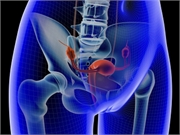Alleles in four loci linked to reproductive subtype, in one locus linked to metabolic subtype of PCOS
TUESDAY, June 23, 2020 (HealthDay News) — Distinct subtypes of polycystic ovary syndrome (PCOS) with novel genetic associations have been identified, according to a study published online June 23 in PLOS Medicine.
Matthew Dapas, Ph.D., from the Northwestern University Feinberg School of Medicine in Chicago, and colleagues examined whether there are biologically relevant subtypes of PCOS in a cluster analysis performed in a genotyped cohort of 893 PCOS cases. The clusters were replicated in an independent, ungenotyped cohort of 263 PCOS cases.
The researchers identified two distinct PCOS subtypes in the clustering: a reproductive group (21 to 23 percent), which was characterized by high luteinizing hormone (LH) and sex hormone binding globulin (SHBG) levels with relatively low body mass index (BMI) and insulin levels; and a metabolic group (37 to 39 percent), which was characterized by lower SHBG and LH levels and higher BMI, glucose, and insulin levels. In a genome-wide association study, alleles were identified in four loci that were significantly associated with the reproductive subtype and at one locus that was significantly associated with the metabolic subtype. In a predictive model that was developed to classify a family-based cohort of 73 women with PCOS, subtypes were found to cluster in families. The likelihood of having the reproductive subtype was increased for carriers of rare variants in DENND1A.
“This is a very powerful objective approach to categorizing syndromes like PCOS into distinct subtypes with different causes, treatment, and clinical outcome,” a coauthor said in a statement.
One author disclosed financial ties to the biotechnology industry.
Copyright © 2020 HealthDay. All rights reserved.








